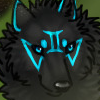Oh yeah......on topic right. As you can see, I am easily distracted. Ooh look a squirrel! Yeah I haven't sponsored a wolf, but I would like to when I'm older^^
Operation P.A.W. | MOVED! Please lock! c:
Re: ~:: Operation P.A.W. ::~ [Protect A Wolf]





:Fursona and Friends: :Fan Club:Raella wrote:Thanks <3
✒Commissions:closed ✒Art Trades:closed ✒Requests:closed




-

Raella - Posts: 2418
- Joined: Wed Mar 23, 2011 11:41 am
- My pets
- My items
- My wishlist
- My gallery
- My scenes
- My dressups
- Trade with me
Re: ~:: Operation P.A.W. ::~ [Protect A Wolf]
I can't wait until I get to sponser a wolf! I want a pup :3
-

Liru Kaulitz - Posts: 8068
- Joined: Fri Nov 27, 2009 2:07 am
- My pets
- My items
- My wishlist
- My gallery
- My scenes
- My dressups
- Trade with me
Re: ~:: Operation P.A.W. ::~ [Protect A Wolf]
I personally would want to sponsor an Ethiopian Wolf. They are in dire need of saving and their numbers are dangerously low in the wild. These excerpts are all from Wikipedia:
It is the most endangered canid, with only about seven populations remaining, totalling roughly 550 adults.
A rabies outbreak in 1990 reduced the largest known population, found in the Bale Mountains National Park, from about 440 wolves to less than 160 in only two weeks.
Ethiopian wolves are decreasing rapidly in population. Fewer than 500 remain today owing to the increased pressure from agriculture, high altitude grazing, hybridization with domestic dogs, direct persecution, and diseases such as rabies. The EWCP (Ethiopian Wolf Conservation Project) actively works on protecting this conservation reliant species. Scientists working with this project have found that this species has some resistance to the effects of small population sizes and some resilience to fragmentation. A 2003 study on the Ethiopian wolf resulted in the conclusion that the key to its survival resides in securing its habitat and isolating its population from the impact of people, livestock and domestic dogs.
The interaction between humans and Ethiopian wolves has become increasingly threatening to their conservation as these negative interactions increase as human density increases. Human interactions include poisoning, persecution in reprisal for livestock losses, and road kills. Mountainous areas are critical for Ethiopian wolves survival to provide a healthy habitat.
Protecting this unique creature entails securing protected status for conservation areas where ecological processes are preserved in an ecosystem, and addressing and counteracting direct threats to survival (human persecution, fragmented populations and coexistence with domestic dogs.) Biologists also recommend the goal of preserving a minimum of 90% of the existing genetic diversity of the species for 100 years, which may require establishing a Nucleus I captive breeding population (preferably in Ethiopia). These aspirations are being pursued by a group called the Ethiopian Wolf Recovery Programme (EWRP).
They really are beautiful wild canines, and their hunting technique and diet is particularly interesting. Not many people know about them, so they don't get the help and funding from the public as well as wild animal organizations.
They aren't very popular to the native Africans, but at least they aren't considered pests (Though in the past the Ethiopian wolf was feared as a livestock predator,[11] today it is not usually considered a major threat to livestock, to the point where sheep and goats are sometimes left unattended in areas where wolves occur. In the southern highlands, losses caused by wolf predation are mostly dismissed due to the rarity of such events when compared to predation by the Spotted Hyena and jackals. and Unlike the Gray Wolf, the Ethiopian wolf is barely touched upon in the folklore or tradition of the human cultures with which it coexists.). The real threat to the wolves is poaching (Although officially a protected species, wolf killings increased in frequency during Ethiopia's period of instability due to the increased availability of firearms. Ethiopian wolves are not usually exploited for fur, though there was an occasion in Wollo in which wolf skins were used as saddle pads.).
10 cookies if you read all that c:
It is the most endangered canid, with only about seven populations remaining, totalling roughly 550 adults.
A rabies outbreak in 1990 reduced the largest known population, found in the Bale Mountains National Park, from about 440 wolves to less than 160 in only two weeks.
Ethiopian wolves are decreasing rapidly in population. Fewer than 500 remain today owing to the increased pressure from agriculture, high altitude grazing, hybridization with domestic dogs, direct persecution, and diseases such as rabies. The EWCP (Ethiopian Wolf Conservation Project) actively works on protecting this conservation reliant species. Scientists working with this project have found that this species has some resistance to the effects of small population sizes and some resilience to fragmentation. A 2003 study on the Ethiopian wolf resulted in the conclusion that the key to its survival resides in securing its habitat and isolating its population from the impact of people, livestock and domestic dogs.
The interaction between humans and Ethiopian wolves has become increasingly threatening to their conservation as these negative interactions increase as human density increases. Human interactions include poisoning, persecution in reprisal for livestock losses, and road kills. Mountainous areas are critical for Ethiopian wolves survival to provide a healthy habitat.
Protecting this unique creature entails securing protected status for conservation areas where ecological processes are preserved in an ecosystem, and addressing and counteracting direct threats to survival (human persecution, fragmented populations and coexistence with domestic dogs.) Biologists also recommend the goal of preserving a minimum of 90% of the existing genetic diversity of the species for 100 years, which may require establishing a Nucleus I captive breeding population (preferably in Ethiopia). These aspirations are being pursued by a group called the Ethiopian Wolf Recovery Programme (EWRP).
They really are beautiful wild canines, and their hunting technique and diet is particularly interesting. Not many people know about them, so they don't get the help and funding from the public as well as wild animal organizations.
They aren't very popular to the native Africans, but at least they aren't considered pests (Though in the past the Ethiopian wolf was feared as a livestock predator,[11] today it is not usually considered a major threat to livestock, to the point where sheep and goats are sometimes left unattended in areas where wolves occur. In the southern highlands, losses caused by wolf predation are mostly dismissed due to the rarity of such events when compared to predation by the Spotted Hyena and jackals. and Unlike the Gray Wolf, the Ethiopian wolf is barely touched upon in the folklore or tradition of the human cultures with which it coexists.). The real threat to the wolves is poaching (Although officially a protected species, wolf killings increased in frequency during Ethiopia's period of instability due to the increased availability of firearms. Ethiopian wolves are not usually exploited for fur, though there was an occasion in Wollo in which wolf skins were used as saddle pads.).
10 cookies if you read all that c:
-

sidereus - Posts: 643
- Joined: Wed Jun 30, 2010 9:05 am
- My pets
- My items
- My wishlist
- My gallery
- My scenes
- My dressups
- Trade with me
Re: ~:: Operation P.A.W. ::~ [Protect A Wolf]
Ooh, goody I get 10 cookies now.
-

Dovahkiin - Posts: 8316
- Joined: Sat May 07, 2011 3:30 pm
- My pets
- My items
- My wishlist
- My gallery
- My scenes
- My dressups
- Trade with me
Re: ~:: Operation P.A.W. ::~ [Protect A Wolf]
Saddle packs? Really? Can't they just kill a cow for that? I would sponsor Mexican wolves and Ethiopian wolves.





:Fursona and Friends: :Fan Club:Raella wrote:Thanks <3
✒Commissions:closed ✒Art Trades:closed ✒Requests:closed




-

Raella - Posts: 2418
- Joined: Wed Mar 23, 2011 11:41 am
- My pets
- My items
- My wishlist
- My gallery
- My scenes
- My dressups
- Trade with me
Re: ~:: Operation P.A.W. ::~ [Protect A Wolf]
MadiWolfClaw wrote:Ooh, goody I get 10 cookies now.
xD
.:Midnight Rain:. wrote:Saddle packs? Really? Can't they just kill a cow for that? I would sponsor Mexican wolves and Ethiopian wolves.
I agree. Though thankfully it was not many Ethiopian Wolves that were killed.

-

sidereus - Posts: 643
- Joined: Wed Jun 30, 2010 9:05 am
- My pets
- My items
- My wishlist
- My gallery
- My scenes
- My dressups
- Trade with me
Re: ~:: Operation P.A.W. ::~ [Protect A Wolf]
I hope I'm not intruding on asking but:
- Does anyone know what the status on the Iberian Wolf is?
x: I've been looking for an hour. I even resorted to my Zoo Tycoon 2 game (which said they are critically endangered), but that's not a viable source.
And to keep on the current subject, even though I'm not a member here, I'd probably sponsor an Arabian Wolf. xD;
- Does anyone know what the status on the Iberian Wolf is?
x: I've been looking for an hour. I even resorted to my Zoo Tycoon 2 game (which said they are critically endangered), but that's not a viable source.
And to keep on the current subject, even though I'm not a member here, I'd probably sponsor an Arabian Wolf. xD;


























-

Sunfang - Posts: 4486
- Joined: Sun Oct 12, 2008 9:06 am
- My pets
- My items
- My wishlist
- My gallery
- My scenes
- My dressups
- Trade with me
Re: ~:: Operation P.A.W. ::~ [Protect A Wolf]
No, its okay. I believe, like the ethiopian wolf, it is very endangered. I was just reading about it in wikapedia. It's so sad. I love Arabian wolves, Ethipian wolves, Iberian wolves and Mexican wolves, but they are in so much trouble right now! I love Iberian wolf pups, they look so cute and squishy! XD I do not want the squishy to go away. 
-

Liru Kaulitz - Posts: 8068
- Joined: Fri Nov 27, 2009 2:07 am
- My pets
- My items
- My wishlist
- My gallery
- My scenes
- My dressups
- Trade with me
Re: ~:: Operation P.A.W. ::~ [Protect A Wolf]
I would sponsor an Ethiopian wolf, for sure. I've always loved them, and since they are a lesser-known breed of wolf, not many people would sponsor them. That or an Iberian wolf.
-

Soruc - Posts: 5068
- Joined: Tue Feb 01, 2011 8:44 am
- My pets
- My items
- My wishlist
- My gallery
- My scenes
- My dressups
- Trade with me
Re: ~:: Operation P.A.W. ::~ [Protect A Wolf]
Yes, they look different then a gray wolf (not as fluffy) but they are still cute and need as much love as all wolves.
-

Liru Kaulitz - Posts: 8068
- Joined: Fri Nov 27, 2009 2:07 am
- My pets
- My items
- My wishlist
- My gallery
- My scenes
- My dressups
- Trade with me
Who is online
Users browsing this forum: No registered users and 6 guests

